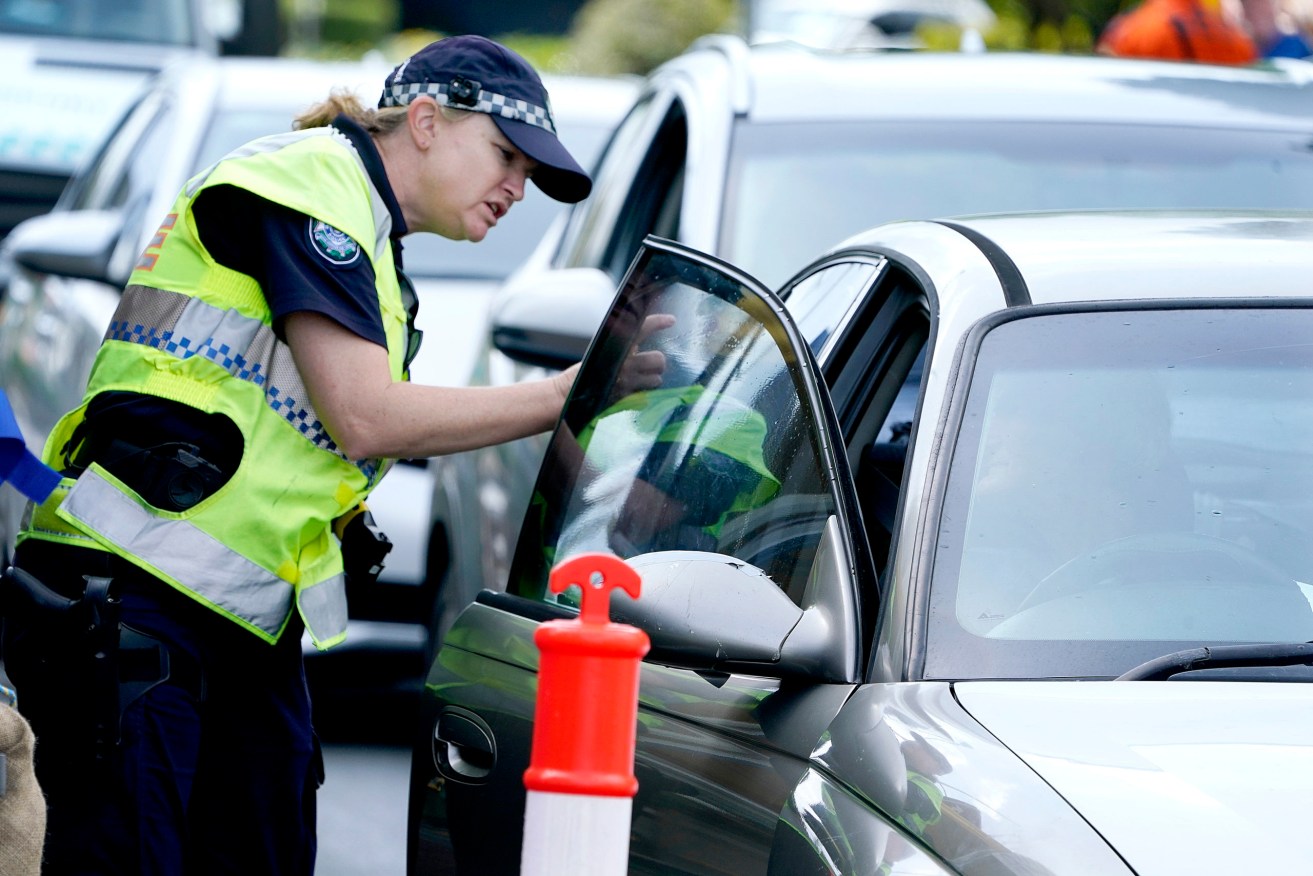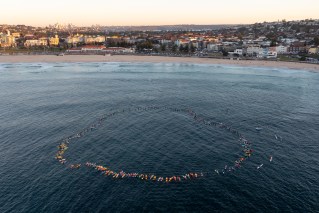Revealed: The many bullets Queensland dodged on road to becoming virus-free
Early action, fortunate timing and very few wildcard events has kept most of Queensland virus-free. But health authorities fear that could change in an instant.

A new report says Queensland nd WA are right to have kept borders closed. (Photo: AAP Image/Dave Hunt)
As the number of COVID-19 cases in Queensland rose by two overnight, to 1026, an analysis of the geographic distribution of cases reveals most have occurred in areas with the best-resourced health systems.
Not only that, but the novel coronavirus has so far been kept from spreading throughout the areas with the highest risk profile, meaning any outbreaks have proved easier to contain and manage. This is despite returning travellers, from cruise ships, overseas flights and even interstate drives, posing the pandemic equivalent of flying embers in a bushfire.
The vast majority of inland council areas have remained free of COVID-19 cases, with infection tending to align with the most populous areas along the coast, and particularly in the urban southeast, where health services are better able to respond.
Twenty Queenslanders remain in hospital – far fewer than Queensland Health feared – with seven in intensive care and six on ventilators. There have been six deaths.
Queensland’s Chief Health Officer, Dr Jeannette Young, today urged people to stay the course, warning that the relatively positive outcomes to date “could rapidly unravel” if restrictions and bans lost their impact.
“Queenslanders are continuing to follow those extraordinarily onerous requirements,” Young said.
Council area data released on Wednesday showed Brisbane had the most cases (408), followed by the Gold Coast (189), Moreton Bay (95), the Sunshine Coast (70) and Logan (42). Across Queensland, 77 per cent of cases were acquired overseas, infecting another 17 per cent of cases, while the source of four per cent of cases remains unknown. A smaller proportion, but growing number of cases, have come from interstate, and Queensland police have already stopped more than 100,000 vehicles at the border.
Despite the potential for close contact, in a normally bustling city, Brisbane is relatively well prepared and with a community that enjoys a lower risk profile. On 2018 data, only 12.4 per cent of the Brisbane population was aged over 65 – people aged over 65 with chronic illness, or aged over 70 generally, are among those most at risk of COVID-19.
The council areas with the highest proportion of older residents have so far had relatively few cases of COVID-19. In Hinchinbrook, 27.7 per cent of the population is older, but there has only been one case, a returning overseas traveller. In Hinchinbrook, 27 per cent of the population is older, and they have had 10 cases – eight acquired overseas, one transmitted locally and one not clear.
Noosa, with the third-highest proportion of older residents in Queensland, is one area where there was potential for disaster. With roughly one in four residents aged over 65, Noosa was the scene of one of the biggest community clusters in Australia, involving staff and guests at a birthday lunch at Sails Restaurant in mid-March. However, the guests – infected or not – subsequently returned to their homes in other places, and public health alerts for potentially compromised sites at Noosa ensured there was no wider spread.
There have been 28 cases from the Sails Restaurant outbreak – half were yet to recover as of last week – but Noosa itself has only 15 cases overall, the bulk of those directly acquired overseas or interstate. Queensland Health will not reveal the geographic distribution of cases from Sails Restaurant due to privacy concerns.
Indigenous communities, where older residents are at even greater risk, remain restricted to prevent an outbreak, and there have been no cases in the Torres and Cape Hospital and Health Service region (a recent outbreak at Cairns Hospital was cause for alarm). The HHS regions with the highest proportion of residents who engage in unhealthy practices, putting them at greater risk of illness and disease, including COVID-19, are more spread out and that may have been an advantage during the pandemic.
Using HHS boundaries, Central West has the highest rate of smoking, and also risky drinking, but has had no cases of COVID-19 to date. Wide Bay has the highest proportion of overweight or obese residents and has had 24 cases, while the Darling Downs has the highest rate of inactivity and has had 42 cases – perhaps demonstrating the need for health prevention, and positive health practices, more generally.
Since Queensland’s first case was announced on January 21, authorities have gradually imposed tighter restrictions and bans on public activity, to successfully flatten the curve of infection. Health services were ramped up and hospitals will soon be able to resume elective surgery, in confidence that COVID-19 cases continue to be managed. However, as Premier Annastacia Palaszczuk noted this week, “all you need is one dinner party, one birthday party and it can all be just blown out of proportion”.












